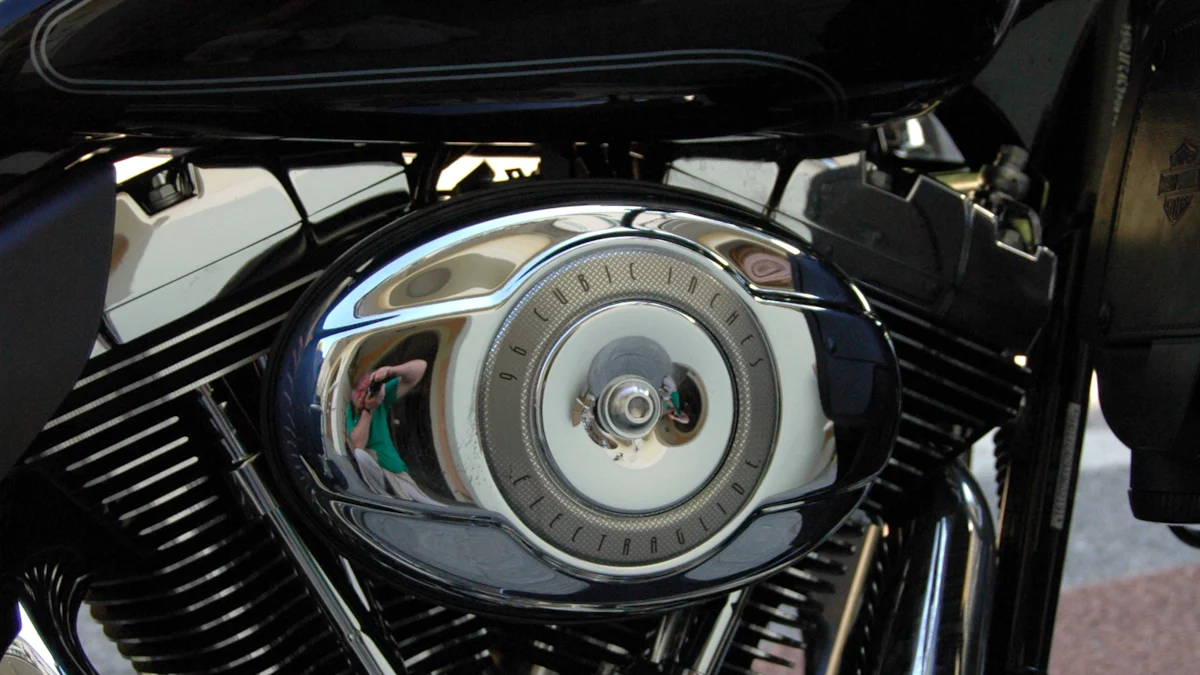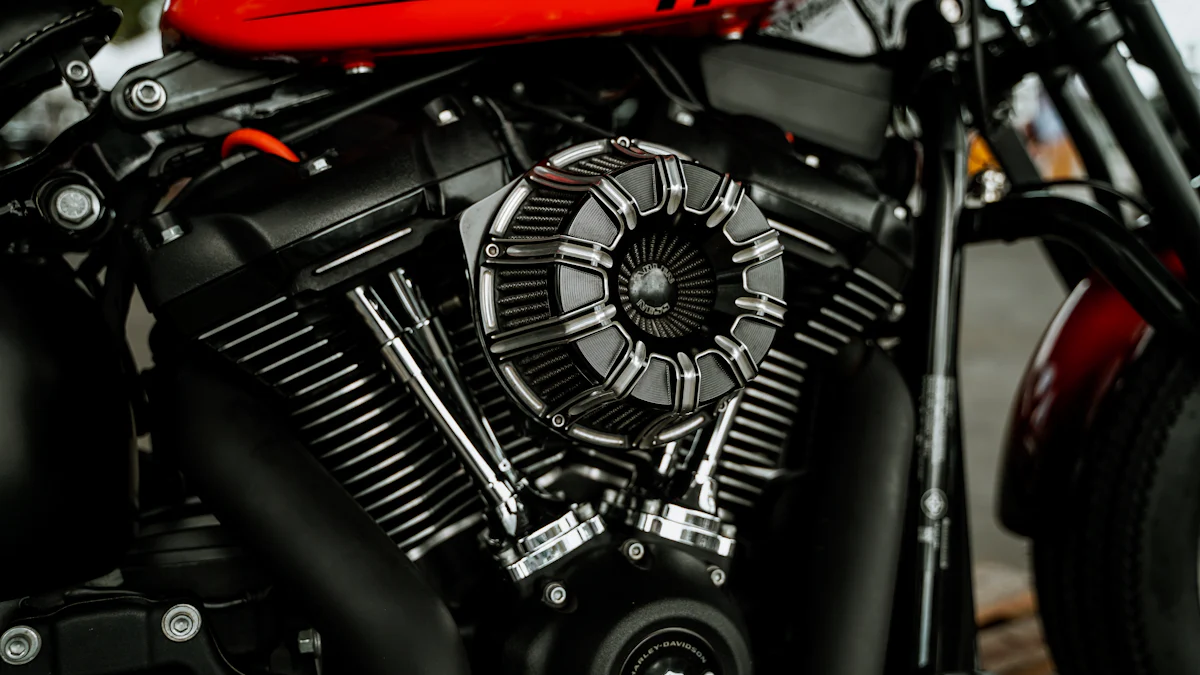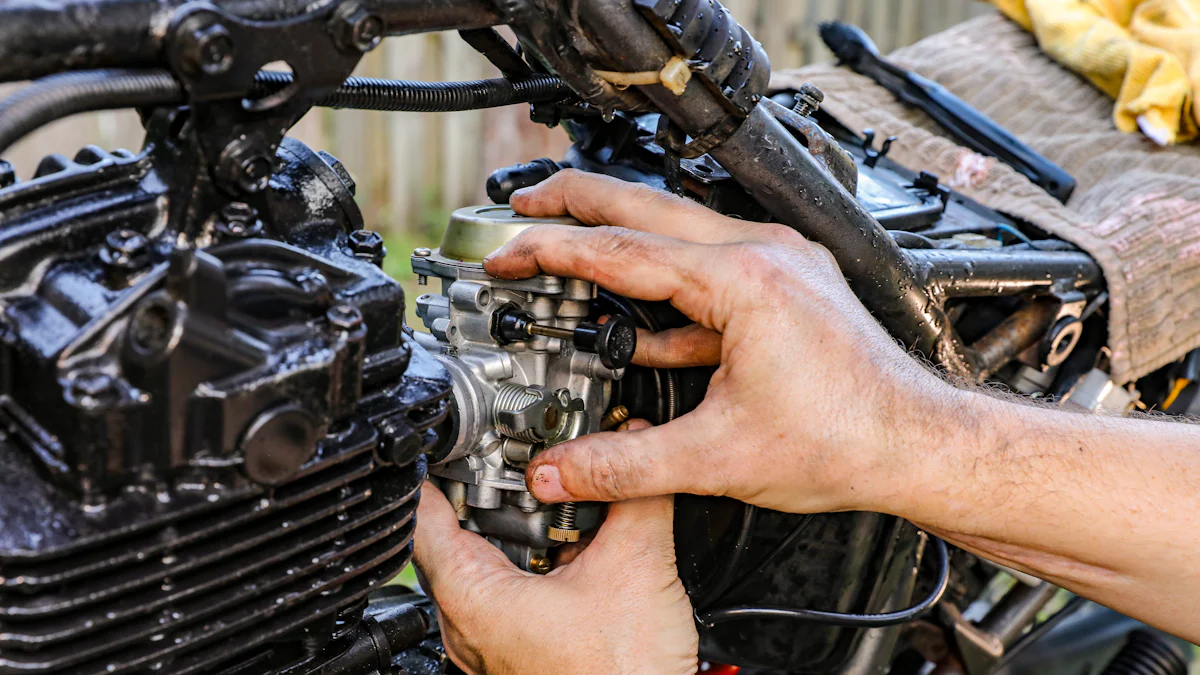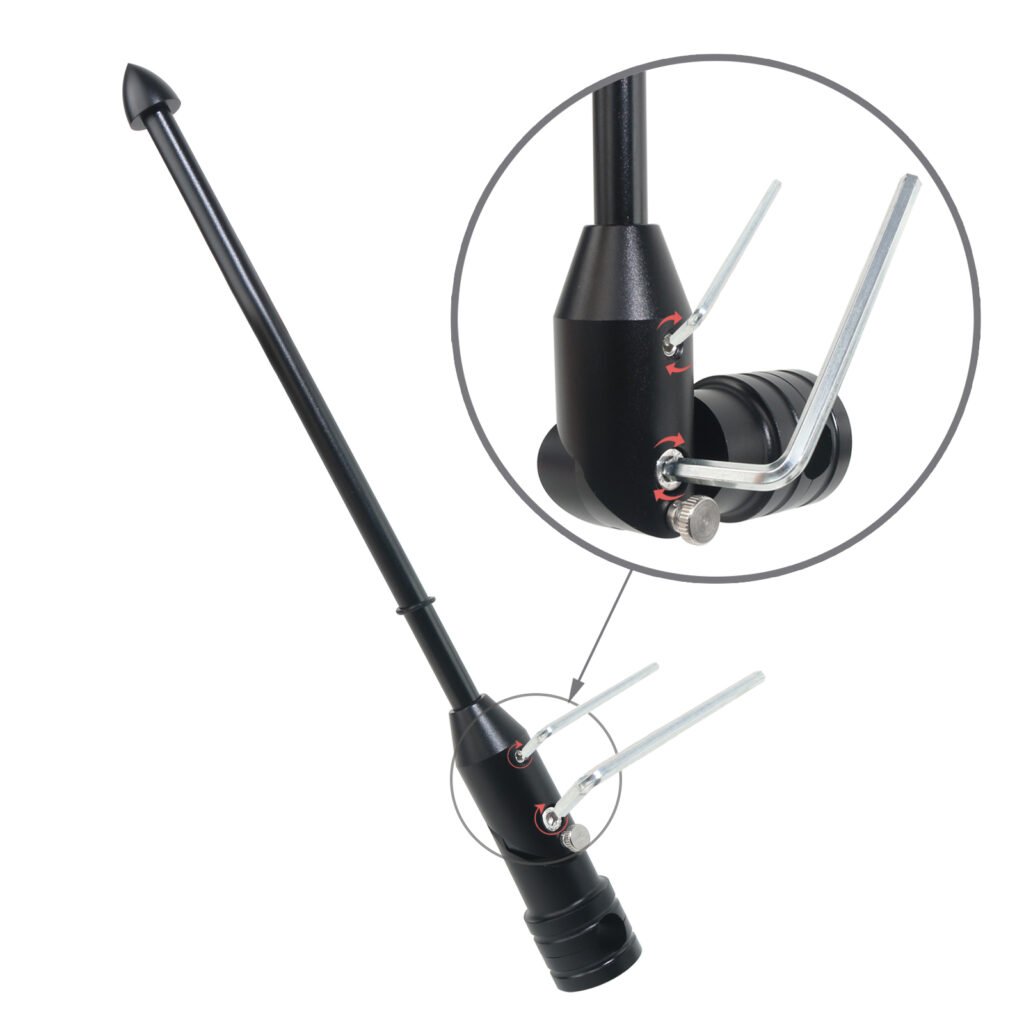
Your Harley’s engine is a masterpiece of power and precision, but it’s not invincible. Overheating can wreak havoc on its performance and longevity. Excessive heat may lead to warped components, misfiring, or even costly repairs. Riding in hot weather or stop-and-go traffic only adds to the strain. Protecting your engine isn’t just about avoiding damage—it’s about ensuring every ride feels smooth and safe. By taking the right steps, you can prevent overheating and keep your bike running cool, no matter the conditions.
Key Takeaways
Ensure proper airflow around your engine by keeping vents clear and avoiding oversized accessories that block ventilation.
Regular maintenance is crucial; check coolant levels, replace dirty oil, and clean air filters to keep your engine running cool.
Adapt your riding habits by maintaining steady speeds and avoiding prolonged idling to minimize heat buildup.
Consider upgrading your cooling system with an oil cooler or cylinder cooling fan, especially if you ride in hot conditions or carry heavy loads.
Be vigilant for signs of overheating, such as steam or discoloration, and take immediate action to prevent engine damage.
Choose high-quality motorcycle-specific products for coolant and oil to ensure optimal performance and temperature regulation.
Plan your rides during cooler parts of the day and take breaks in extreme heat to allow your engine to cool down.
Common Causes of Motorcycle Overheating in Harley Davidson Engines

Insufficient Airflow
Your Harley relies on airflow to keep its engine cool, especially if it has an air-cooled engine. When airflow is blocked or reduced, the engine struggles to dissipate heat effectively. Riding in heavy traffic or at low speeds often limits the natural airflow around the engine. This can cause heat to build up quickly. Modifications like oversized saddlebags or fairings may also obstruct airflow, making the situation worse. To avoid this, ensure your bike’s design allows for proper ventilation. Keeping the path clear for air to circulate is one of the simplest ways to prevent motorcycle overheating.
Poor Engine Maintenance
Neglecting regular maintenance can lead to overheating issues. Dirty oil, clogged filters, or worn-out components force the engine to work harder, generating more heat. Low coolant levels, especially in liquid-cooled models, are another common culprit. Without enough coolant, the engine cannot regulate its temperature effectively. Regularly check your oil and coolant levels, and replace them as needed. Clean or replace air filters to ensure the engine breathes properly. A well-maintained engine not only runs cooler but also performs better and lasts longer.
Environmental Factors
The environment plays a significant role in how your motorcycle handles heat. Riding in hot weather naturally increases the engine’s temperature. Stop-and-go traffic in urban areas adds to the problem, as the engine doesn’t get enough airflow to cool down. High altitudes or steep terrains can also strain the engine, causing it to overheat. If you ride in extreme conditions, take extra precautions. Plan your routes to avoid prolonged idling or heavy traffic. Consider riding during cooler parts of the day to minimize heat exposure. Adapting to environmental challenges helps keep your engine running smoothly.
Modifications and Aftermarket Parts
Customizing your Harley with modifications or aftermarket parts can enhance its performance and style, but it might also contribute to overheating if not done thoughtfully. Some changes can disrupt the delicate balance of airflow and cooling that your engine relies on.
For instance, oversized saddlebags or fairings may block airflow around the engine. Without proper ventilation, heat builds up quickly, especially in stop-and-go traffic. If you’ve added these accessories, make sure they don’t obstruct the natural cooling process. You might need to adjust their placement or choose designs that allow better airflow.
Aftermarket exhaust systems are another common upgrade. While they can improve performance, some may increase engine heat. High-performance exhausts often run hotter, which can strain your engine during long rides. When selecting an exhaust system, prioritize options designed to manage heat effectively.
Upgrading your engine components, like installing a big bore kit, can also lead to higher operating temperatures. Bigger engines generate more power, but they also produce more heat. To counter this, consider adding an oil cooler or upgrading your cooling system. These additions help dissipate the extra heat and keep your engine running smoothly.
Pro Tip: If you’re planning modifications, consult a professional mechanic. They can recommend parts that enhance performance without compromising cooling efficiency.
Lastly, always monitor how your bike performs after making changes. If you notice signs of overheating, such as excessive engine heat or knocking under acceleration, address the issue immediately. Thoughtful modifications can elevate your riding experience, but keeping your engine cool should remain a top priority.
Signs Your Harley Engine is Overheating
Recognizing the signs of overheating early can save your Harley’s engine from serious damage. Paying attention to these indicators ensures you can take action before the situation worsens.
Visual and Physical Indicators
Your bike often shows visible signs when it’s struggling with high engine temperature. Look for discoloration or a bluish tint on the exhaust pipes. This can indicate excessive heat. You might also notice steam or smoke coming from the engine area, especially if coolant levels are low or there’s a leak.
Touching the engine or nearby components can also reveal overheating. If the engine feels unusually hot to the touch, it’s a clear warning. Be cautious when checking, as direct contact with overheated parts can cause burns. One rider shared how their head pipes reached temperatures as high as 700°F, which is far beyond normal operating conditions.
Tip: If you see steam or smoke, stop riding immediately. Let the engine cool down and inspect for potential issues like leaks or blockages.
Performance Issues
Overheating doesn’t just affect the engine’s appearance—it impacts how your bike performs. You might notice a drop in power or sluggish acceleration. The engine may misfire or knock, especially under heavy loads or during long rides. These performance issues often stem from high engine temperature, which forces the engine to work harder than it should.
Another common symptom is difficulty starting the bike after it’s been running hot. Overheated components can disrupt the ignition process, leaving you stranded. If you experience any of these problems, it’s time for immediate engine checks to identify the root cause.
Dashboard Warnings
Modern Harley Davidson motorcycles come equipped with dashboard indicators to alert you to potential problems. Keep an eye on the temperature gauge. If it shows consistently high temps, your engine is likely overheating. Some models also have warning lights specifically for engine temperature. These lights activate when the system detects unsafe heat levels.
Ignoring these warnings can lead to severe damage. When the dashboard signals an issue, pull over safely and let the engine cool. Check for obvious problems like low coolant or blocked airflow. If the warnings persist, consult a mechanic to prevent further complications.
Pro Tip: Familiarize yourself with your bike’s dashboard symbols and what they mean. This knowledge can help you respond quickly to signs of overheating.
By staying alert to these visual, physical, and performance-related signs, you can protect your Harley from the dangers of engine overheating. Regular engine checks and prompt action are key to keeping your bike in top shape.
Preventative Measures to Prevent Overheating

Keeping your Harley’s engine cool requires proactive care and smart choices. By following these preventative measures, you can avoid motorcycle overheating and ensure your bike stays at its ideal operating temperature.
Regular Maintenance
Regular maintenance is the foundation of preventing motorcycle overheating. Start by checking your coolant levels frequently. Low coolant levels are one of the most common causes of overheating. Inspect the coolant system for leaks or blockages that could disrupt coolant circulation. A clogged radiator or damaged hoses can prevent the coolant from flowing properly, leading to rising engine temperatures.
Replace your coolant as recommended by the manufacturer. Over time, coolant loses its effectiveness, which can compromise your cooling system. Use high-quality coolant to maintain optimal performance. Don’t forget to clean or replace air filters regularly. Dirty filters restrict airflow, forcing the engine to work harder and heat up faster.
Pro Tip: Make it a habit to inspect your bike before every ride. Look for signs of wear and tear, especially in the radiator, hoses, and coolant system.
Upgrading Cooling Systems
Upgrading your cooling system can make a significant difference in managing engine temperature. Consider installing an oil cooler. This device helps reduce the running temperature of your engine by keeping the oil cooler, which in turn prevents overheating. An oil cooler is especially useful for riders who frequently travel in hot climates or tackle long-distance rides.
Another effective upgrade is adding a cylinder cooling fan. This fan provides additional airflow to the engine, especially during idling or slow-speed rides when natural airflow is limited. It’s a practical solution for keeping your Harley’s engine within its normal operating temperature range.
If you’ve made modifications to your bike, such as installing a big bore kit, upgrading the cooling system becomes even more critical. Bigger engines generate more heat, so investing in enhanced cooling solutions ensures your bike performs efficiently without overheating.
Choosing the Right Products
The products you use play a crucial role in maintaining your bike’s engine temperature. Always choose a coolant designed specifically for motorcycles. These coolants are formulated to handle the unique demands of motorcycle engines, ensuring proper heat dissipation and coolant circulation.
When selecting oil, opt for high-quality options that can withstand high temperatures. The right oil not only lubricates the engine but also helps regulate its temperature. Pairing quality oil with an oil cooler creates a robust defense against overheating.
Additionally, consider aftermarket parts that improve cooling efficiency. For example, relocating the oil filter can enhance airflow and cooling. If you’re unsure about which products to choose, consult a professional mechanic for recommendations tailored to your Harley.
Quick Tip: Avoid using automotive coolant in your motorcycle. It may not meet the specific requirements of your bike’s cooling system.
By staying consistent with maintenance, upgrading your cooling system, and choosing the right products, you can prevent overheating and keep your Harley running smoothly. These steps not only protect your engine but also enhance your overall riding experience.
Ensuring Proper Airflow
Proper airflow is essential for keeping your Harley’s engine cool. Without it, heat builds up quickly, especially during slow rides or in heavy traffic. You can take simple steps to ensure your bike gets the airflow it needs.
First, check for anything that might block airflow around the engine. Oversized saddlebags, fairings, or other accessories can restrict ventilation. Adjust their placement or choose designs that allow air to circulate freely. Even small changes can make a big difference in how well your cooling system performs.
Next, keep your bike clean. Dirt, debris, or bugs can clog vents and reduce airflow. Regularly inspect and clean these areas to maintain proper ventilation. A clean bike not only looks great but also runs cooler.
Finally, consider your riding habits. Riding at steady speeds on open roads allows natural airflow to cool the engine. Avoid prolonged idling or stop-and-go traffic whenever possible. These situations limit airflow and increase the risk of overheating.
Quick Tip: If you often ride in hot weather or urban areas, think about adding a cylinder cooling fan. It boosts airflow when natural ventilation isn’t enough.
Additional Tips
Raise the tank for better airflow.
Raising the fuel tank slightly can improve airflow around the engine. This modification creates more space for air to move, helping to dissipate heat. It’s a simple adjustment that can have a noticeable impact on your bike’s cooling efficiency. Consult a mechanic to ensure the modification is done safely and effectively.
Relocate the oil filter to improve cooling efficiency.
Relocating the oil filter can enhance your bike’s cooling system. When placed in a better position, the oil filter allows for improved airflow and heat dissipation. This adjustment works particularly well for riders who’ve made other modifications that might block airflow. A professional mechanic can help you find the best location for your oil filter.
Regularly inspect hoses and the radiator for damage or debris.
Damaged hoses or a clogged radiator can disrupt your cooling system. Inspect these components regularly to catch issues early. Look for cracks, leaks, or blockages that might prevent coolant from circulating properly. Cleaning the radiator and replacing worn hoses ensures your cooling system operates at its best.
Pro Tip: Make radiator inspections part of your routine maintenance. A well-maintained radiator keeps your engine running smoothly, even in challenging conditions.
By focusing on airflow and following these additional tips, you can keep your Harley’s engine cool and avoid overheating. These small adjustments and regular checks go a long way in protecting your bike and enhancing your riding experience.
Riding Strategies to Minimize Overheating Risks
Adjusting Riding Habits
Your riding habits play a big role in keeping your Harley’s engine cool. Start by maintaining steady speeds whenever possible. Riding at a consistent pace allows natural airflow to cool the engine effectively. Open roads are your best friend when it comes to preventing motorcycle overheating.
Avoid high RPMs for extended periods. Revving the engine too much generates excessive heat, especially during long rides or in stop-and-go traffic. Shift gears smoothly and keep the engine within its optimal range to reduce strain.
Idling for too long can also cause overheating. If you’re stuck in traffic or waiting at a stoplight, consider turning off the engine if it’s safe to do so. This simple step can prevent unnecessary heat buildup.
Quick Tip: Use the Engine Idle Temperature Management System (EITMS) if your Harley is equipped with it. This feature helps manage engine heat during idling by shutting off the rear cylinder temporarily.
Planning for Weather and Terrain
Planning ahead can save your engine from unnecessary stress. Hot weather naturally increases the risk of motorcycle overheating, so try to ride during cooler parts of the day, like early morning or late evening. If you must ride in extreme heat, take frequent breaks to let the engine cool down.
Terrain matters too. Steep hills and high altitudes can put extra strain on your engine. When riding through these areas, adjust your speed and avoid pushing the bike too hard. Use lower gears to maintain control without overworking the engine.
Carry a small toolkit for emergencies. Include items like a coolant bottle and basic tools to address minor issues on the go. Being prepared can make a big difference when riding in challenging conditions.
Pro Tip: Consider installing the 3.0 UltraCool® Oil Cooling System. It’s designed to keep your engine oil cooler, even in tough environments like steep terrains or hot climates.
Managing Load and Weight
The weight your bike carries affects its performance and engine temperature. Overloading your Harley forces the engine to work harder, which generates more heat. Pack only what you need for your ride and distribute the weight evenly to avoid putting extra strain on the engine.
If you often travel with a passenger or heavy luggage, consider upgrading your cooling system. Adding an oil cooler, like the OilBud™ Oil Cooler, can help manage the extra heat produced by the engine under heavy loads. This upgrade ensures your bike stays cool and performs efficiently.
Check your tire pressure before every ride. Underinflated tires increase rolling resistance, making the engine work harder. Properly inflated tires not only improve fuel efficiency but also help keep the engine temperature in check.
Quick Tip: Use lightweight gear and accessories to reduce the overall load on your bike. Every pound counts when it comes to preventing motorcycle overheating.
By adjusting your riding habits, planning for weather and terrain, and managing your bike’s load, you can significantly reduce the risk of overheating. These strategies not only protect your engine but also enhance your overall riding experience.
Emergency Actions if Your Harley Engine Overheats
When your Harley’s engine overheats, quick and decisive action can prevent further damage. Knowing what to do in these situations ensures your safety and protects your bike from costly repairs. Follow these steps to handle overheating emergencies effectively.
Immediate Steps to Take
If you notice signs of overheating, pull over safely as soon as possible. Turn off the engine to stop it from generating more heat. Let the bike sit and cool down naturally. Avoid touching the engine or nearby components during this time, as they may still be extremely hot.
Check for visible issues like steam, smoke, or coolant leaks. Steam often signals a problem with the cooling system, while a burning oil smell could indicate excessive engine temperature. If you see any of these signs, avoid restarting the bike until you’ve addressed the issue.
Quick Tip: Carry a small emergency kit with essentials like coolant, basic tools, and gloves. These items can help you manage minor problems on the road.
Stay calm and patient while the engine cools. Restarting it too soon can worsen the situation. Use this time to inspect your surroundings and plan your next steps.
Inspecting for Damage
Once the engine has cooled, inspect your bike for potential damage. Start by checking the coolant levels. Low coolant often leads to overheating. If the levels are low, refill them with the appropriate motorcycle coolant. Avoid using automotive coolant, as it may not meet your Harley’s requirements.
Examine the radiator and hoses for cracks, leaks, or blockages. Dirt or debris in the radiator can restrict airflow, causing the engine temperature to rise. Clean the radiator carefully and remove any obstructions. Inspect the hoses for wear or damage that might disrupt coolant circulation.
Look for discoloration or warping on engine components. Excessive heat can cause visible changes, especially on the exhaust pipes or cylinder heads. If you notice significant damage, avoid riding further and seek professional assistance.
Pro Tip: Consider installing a cooling system upgrade like the UltraCool® Oil Cooling System. It helps maintain a stable engine temperature, even in challenging conditions.
Seeking Professional Help
If you can’t resolve the issue on your own, contact a professional mechanic. Riding with unresolved overheating problems can lead to severe engine damage. A mechanic can diagnose the root cause and recommend effective solutions.
Describe the symptoms you observed, such as poor performance, dashboard warnings, or unusual smells. Mention any recent modifications or maintenance work. This information helps the mechanic pinpoint the issue faster.
In some cases, investing in aftermarket cooling solutions like Love Jugs cooling fans can prevent future overheating. These fans provide additional airflow to keep your engine cool, especially during idling or slow rides.
Quick Tip: Regular maintenance checks by a professional can catch potential issues early, reducing the risk of overheating during your rides.
By taking immediate action, inspecting for damage, and seeking professional help when needed, you can handle overheating emergencies with confidence. These steps protect your Harley and ensure you’re back on the road safely.
Overheating can take a toll on your Harley’s performance, but you now know how to prevent it. By understanding the causes—like insufficient airflow or poor maintenance—and recognizing early signs, you can act before problems escalate. Regular upkeep, smart riding habits, and proactive upgrades keep your engine cool and efficient. Remember, your Harley deserves care and attention to deliver the best rides. Take charge of its health, and enjoy smooth, worry-free journeys every time you hit the road.
FAQ
How can I tell if my Harley is overheating?
Your Harley gives you several signs when it’s overheating. Look for visual cues like steam, smoke, or discoloration on the exhaust pipes. You might also notice a burning smell or feel excessive heat radiating from the engine. Performance issues, such as sluggish acceleration or misfiring, are common indicators too. If your bike has a temperature gauge or warning light, keep an eye on it during rides.
Quick Tip: If you see steam or smoke, pull over immediately and let the engine cool before inspecting it further.
What should I do if my engine overheats while riding?
If your engine overheats, stop riding as soon as it’s safe. Turn off the engine and let it cool naturally. Avoid touching the engine or nearby parts, as they may still be extremely hot. Once cooled, check for visible issues like low coolant levels, leaks, or blockages in the radiator. If you can’t resolve the problem, call a professional mechanic for assistance.
Pro Tip: Carry a small emergency kit with essentials like coolant and basic tools to handle minor issues on the road.
How often should I check my coolant levels?
You should check your coolant levels regularly, ideally before every ride. Low coolant levels are a leading cause of overheating. Spotting puddles under your bike or coolant residue on engine parts could indicate a leak. Address leaks promptly to prevent further issues.
Expert Insight: “Regularly checking coolant levels and engine temperature is key to avoiding overheating,” says Expert Mechanic.
Can I use automotive coolant in my Harley?
No, you should avoid using automotive coolant in your Harley. Motorcycle engines have specific requirements, and automotive coolant may not meet them. Always use a coolant designed for motorcycles to ensure proper heat dissipation and system compatibility.
Quick Tip: Check your owner’s manual for the recommended type of coolant for your Harley.
Do aftermarket parts increase the risk of overheating?
Some aftermarket parts can increase the risk of overheating if they disrupt airflow or add strain to the engine. Oversized saddlebags, fairings, or high-performance exhaust systems are common culprits. When installing aftermarket parts, prioritize those designed to maintain or improve cooling efficiency.
Pro Tip: Consult a professional mechanic before making modifications to ensure they won’t compromise your bike’s cooling system.
How can I improve airflow around my engine?
Improving airflow is simple. Keep your bike clean and free of dirt or debris that might block vents. Adjust accessories like saddlebags or fairings to allow better ventilation. Raising the fuel tank slightly can also enhance airflow around the engine.
Quick Tip: Consider adding a cylinder cooling fan for extra airflow during slow rides or idling.
Is idling bad for my Harley’s engine?
Yes, prolonged idling can cause your engine to overheat. When idling, the engine doesn’t get enough natural airflow to cool down. If you’re stuck in traffic or waiting at a stoplight, turn off the engine if it’s safe to do so.
Pro Tip: Use the Engine Idle Temperature Management System (EITMS) if your Harley has it. This feature helps manage heat during idling by temporarily shutting off the rear cylinder.
What riding habits help prevent overheating?
Riding at steady speeds on open roads allows natural airflow to cool your engine. Avoid high RPMs for extended periods, as they generate excessive heat. Plan your rides during cooler parts of the day and take breaks to let the engine cool when riding in hot weather.
Quick Tip: Shift gears smoothly and keep the engine within its optimal range to reduce strain and heat buildup.
Should I upgrade my cooling system?
Upgrading your cooling system can be a smart move, especially if you ride in hot climates or carry heavy loads. Adding an oil cooler or cylinder cooling fan can significantly reduce engine temperatures. These upgrades are particularly helpful for bikes with modifications like big bore kits.
Pro Tip: The UltraCool® Oil Cooling System is a popular choice for Harley riders looking to enhance cooling performance.
How can I prevent coolant leaks?
Inspect your radiator and hoses regularly for cracks, leaks, or blockages. Replace worn-out hoses and clean the radiator to ensure proper coolant circulation. Spotting puddles under your bike or coolant residue on engine parts early can help you address leaks before they cause overheating.
Expert Insight: “A well-maintained radiator and hoses are essential for keeping your engine cool,” advises Expert Mechanic.


